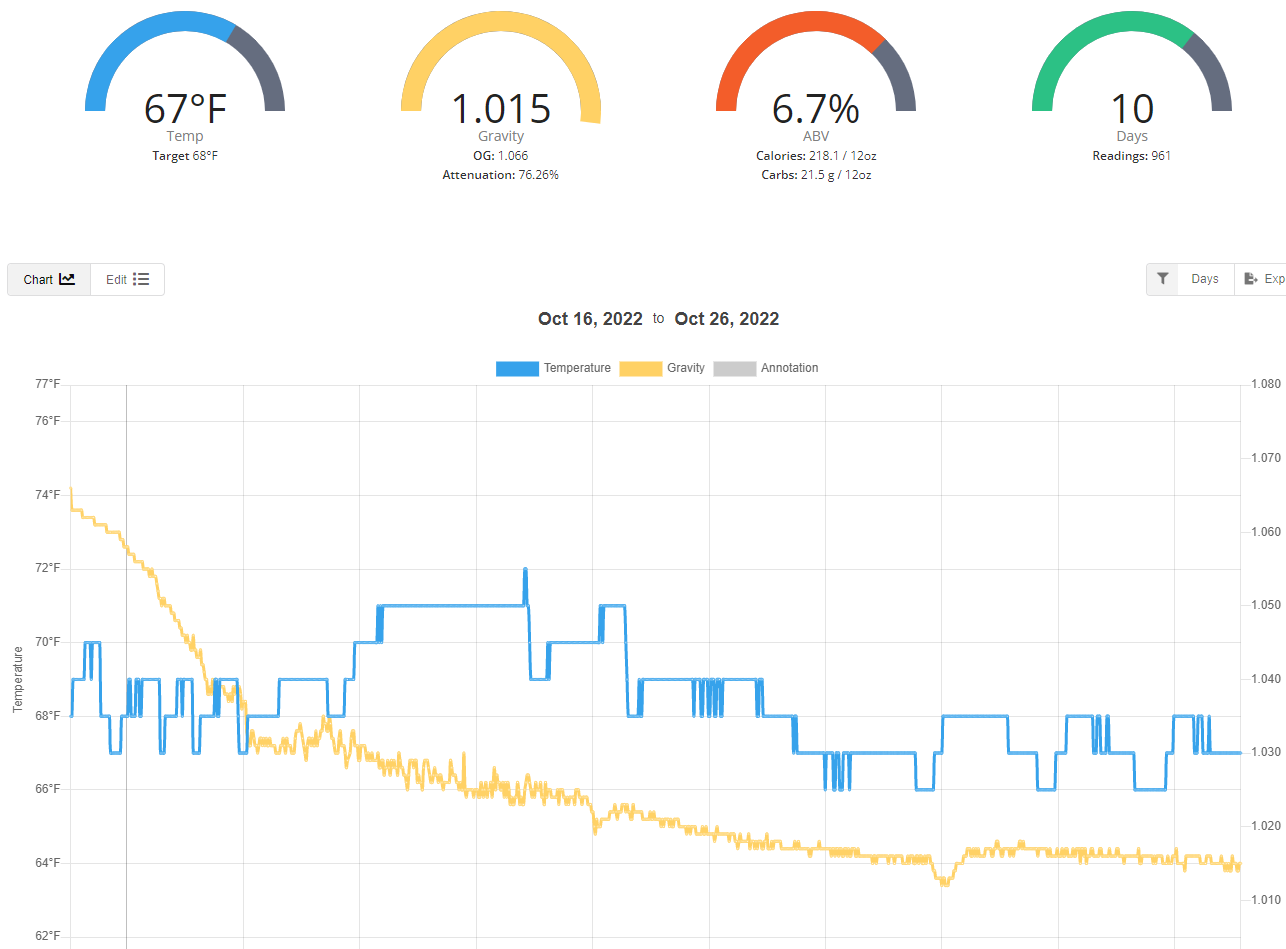Brian Parfitt
Well-Known Member
- Joined
- Apr 17, 2020
- Messages
- 45
- Reaction score
- 4
Hello all.. I have a NEIPA that is on day 10 in the fermenter. I added ~ 3oz dry hops on day 3 of fermentation and just hit it with second shot of hops (3 oz) on day 7.

Tasting this from the fermenter.. Quite a bit of bitterness (actually a LOT of bitterness with hop particles floating in the sample) which I would characterize as hop burn... So my question... Does this look ready to cold crash to get off the hops so I can start mellowing it out in a keg? Or do I let it go another day or so to see my FG flatten out...
I see that on Oct 23rd I was flattening out pretty nicely. I dry hopped that evening around 9 p,m. and attribute the dip in gravity to me dumping in hops and pulling a sample from the sample tap. After that, I see gravity trending down ever so slightly. My expected FG was 1.017... I'm close.
Hoping to have this in a keg and drinkable by Nov 5th for a brew day social planned with some friends.
Thanks in advance for your feedback.
Brian

Tasting this from the fermenter.. Quite a bit of bitterness (actually a LOT of bitterness with hop particles floating in the sample) which I would characterize as hop burn... So my question... Does this look ready to cold crash to get off the hops so I can start mellowing it out in a keg? Or do I let it go another day or so to see my FG flatten out...
I see that on Oct 23rd I was flattening out pretty nicely. I dry hopped that evening around 9 p,m. and attribute the dip in gravity to me dumping in hops and pulling a sample from the sample tap. After that, I see gravity trending down ever so slightly. My expected FG was 1.017... I'm close.
Hoping to have this in a keg and drinkable by Nov 5th for a brew day social planned with some friends.
Thanks in advance for your feedback.
Brian






































![Craft A Brew - Safale S-04 Dry Yeast - Fermentis - English Ale Dry Yeast - For English and American Ales and Hard Apple Ciders - Ingredients for Home Brewing - Beer Making Supplies - [1 Pack]](https://m.media-amazon.com/images/I/41fVGNh6JfL._SL500_.jpg)







